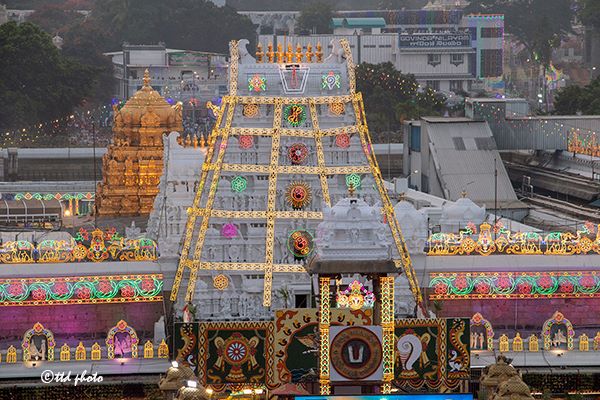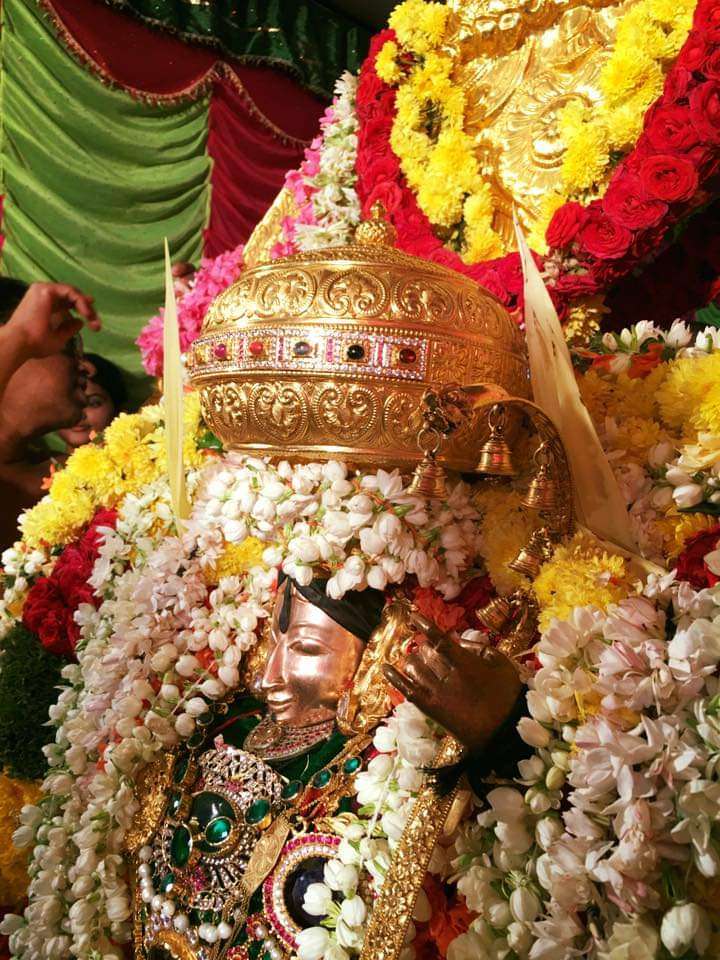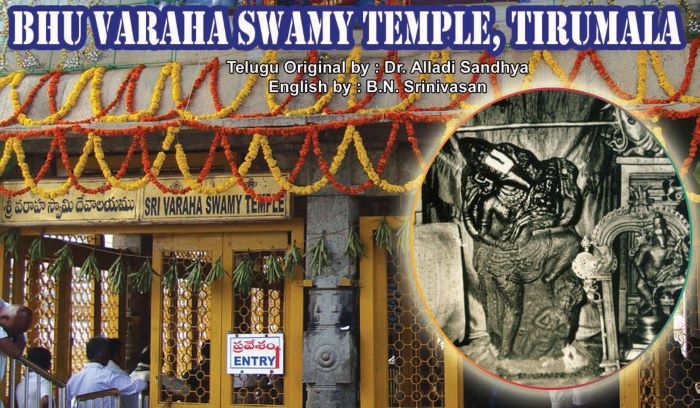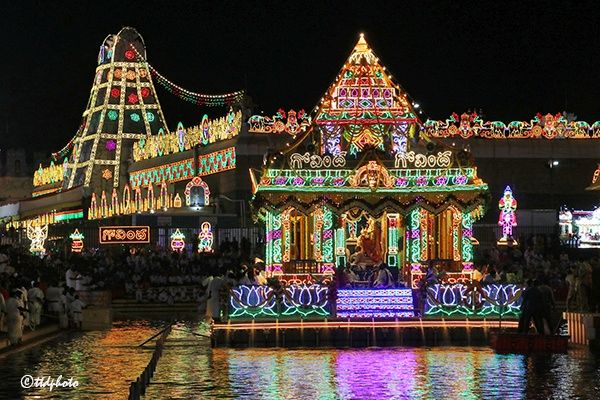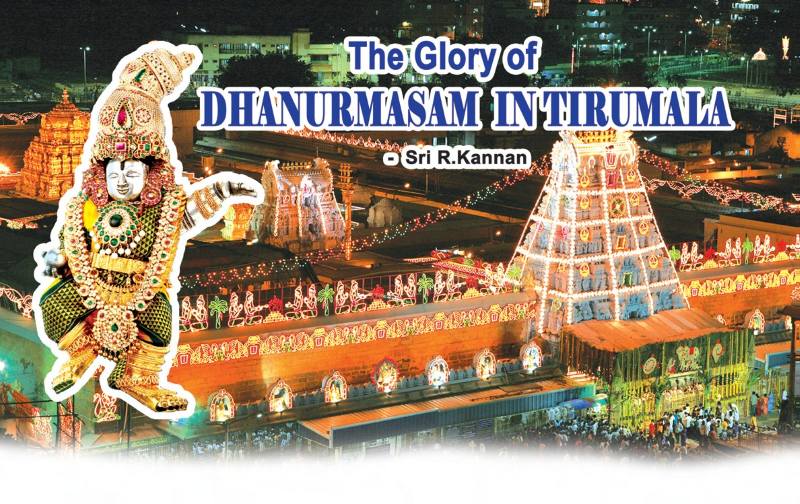Kalyanotsava Mandapam or Kalyana Mandapam The lush green forests of Seshachala house, Sri Venkateswara Swamy, who is also revered as Perumal, Venkatachalapati, Tirumalesa, Govinda, Balaji, Srinivasa and many more names. Mandapams – Tirumala Temple The ancient temple of Lord Venkateswara in the hill shrine of Tirumala is an amazing complex of history, culture, and traditions. Almost Read More
Tag: Tirumala
Tirumala is a spiritual place in Tirupati district of the Indian state of Andhra Pradesh. It is one of the neighborhoods of the Tirupati city
Sikyotsavam: Explore the Vibrant Hindu Festival
Sikyotsavam or Utlotsavam Sikyotsavam, Utlotsavam, or Uriyadi festival is celebrated with full gaiety and religious fervour in Tirumala and Tirupati every year. This Historical festival is celebrated, and many devotees participate to observe the event. Lord Venkateswara’s Temple is known for many festivals throughout the year and it is called ‘Nitya Kalyanam Pacchatoranam’. Lord Venkateswara Read More
Adi Varaha Kshetram: Powerful Vishnu Temple
Adi Varaha Kshetram – Tirumala The Universal Supremo of Kaliyuga, Sri Venkateswara Swamy is residing in Tirumala with the purpose of protecting His devotees across the globe in this aeon. Puranic legends indicate that Sri Maha Vishnu after completing His divine task of eliminating the demons has taken abode on Venkatachala hills in the incarnation Read More
Teppotsavam 2025 at Tirumala
Srivari Salakatla Teppotsavam 2025 / Teppa Utsavam Srivari Salakatla Teppotsavam 2025 will be performed from 09.03.2025 to 13.03.2025. The Annual Float Festival (Teppotsavam) at Tirumala is performed in the Telugu month of Phalguna for five days. It begins on the day of Ekadashi and concludes with Pournima Day. The deities are taken around in specially decorated Read More
Paruveta Utsavam in Tirumala 2025
Paruveta Utsavam On the Kanuma festival day, Paruveta Utsavam is held in Tirumala every year. On this day, the processional deities of Lord Sri Malayappa Swamy and Lord Sri Krishna Swamy, seated on separate palanquins, are taken for a pleasure hunt to Paruveta Mandapam in Tirumala from the main shrine in a colourful procession. On Read More
Glory of Dhanurmasam in Tirumala
Dhanurmasam in Tirumala In Tirumala, every year in the month of Dhanurmasam, it is Sri Krishna and not Bhoga Srinivasa Murthy who listens to the lullaby sung by the descendant of Annamaiah. During this one month Suprabhatam will not be rendered. Instead of Suprabhatam, Andal’s Tiruppavai is rendered. Sri Krishna will be given a bath Read More
Divine Story of Mother Alamelumangamma
Is it true? Did the dweller of the Blissful Abode perform penance? The Swamy dwelling in the golden-towered mansion over the seven hills really perform penance? Did Alamelumangamma manifest as a result of the penance performed by the god of gods? Appears strange! Did it happen? Where did this happen? Can we believe the story? Read More
Purisai Garden Ceremony – Tiruvaadippooram Shaattumurai
Purisai Garden Ceremony On the day of Tiruvaadipuram Shaattumurai itself, Lord Venkateswara goes to Purisai Garden. On the evening of the day of Poorvaphalguni star in Kataka month, Sri Malayappa Swamy goes to Purisai Garden in a wooden Tiruchi in a wider circumambulation. There, different preparations are distributed to the devotees after offering them to Read More
Vikhanasa Jayanthi At Tirumala 2024
Vikhanasa Jayanthi – Tirumala Vikhanasa Maharshi Jayanthi / Vikhanasa Jayanthi will be held on the day of Shravana Pournami every year. This year Vikhanasa Jayanthi will be held on 19.08.2024 The next day, Lord Srinivasa along with Goddess Sridevi and Bhudevi will grace the Sannidhi of his ardent bhakta located on North Mada Street in Read More
Sri Yoga Narasimha Swamy Temple – Inside Tirupati Balaji Temple
Sri Yoga Narasimha Swamy Temple On the Vimana Pradakshana path, in the northeast direction, there is a west-facing Yoga Narasimha Swamy temple. It has Mukha Mandapam (pillared entrance) Antharalamu (middle space) and Garbha Alayam (Sanctum Sanctorum). In the Sanctum Sanctorum, there is a three-foot-high platform. On that platform west facing idol of Yoga Narasimha is Read More
